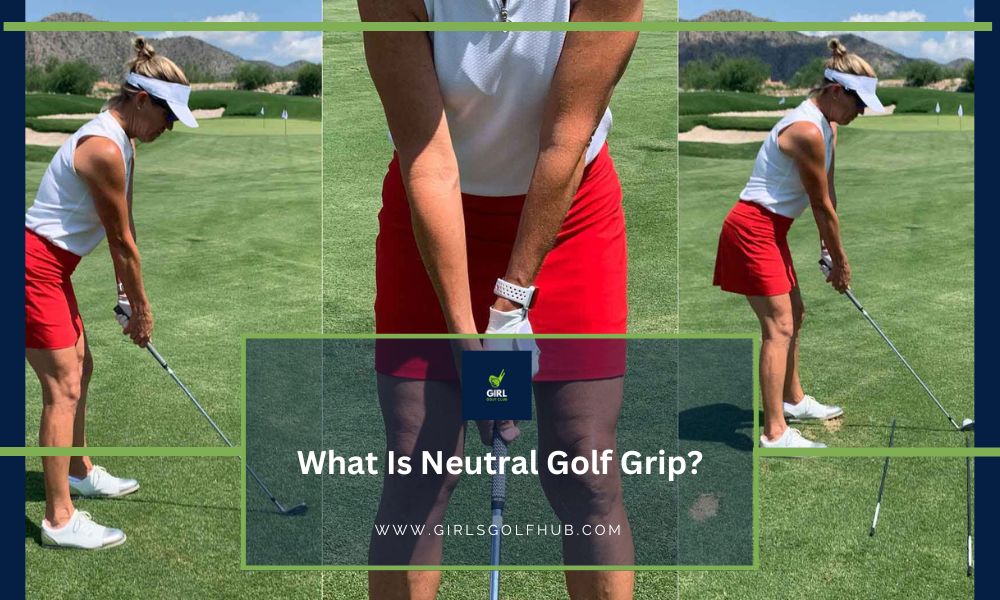Getting better at golf starts with how you hold your club. The grip is key, and the good news is that there is one type that really helps beginners which is “the neutral golf grip”. Surprisingly, it is easy to learn and really useful. In this guide, I am going to show you what it is, why it is good for your game, and how to do it right.
Understanding A Neutral Golf Grip
The most basic grip for a golf club is a neutral grip. It is neither too strong nor too weak. This grip allows your hands to cooperate in a balanced manner. This contributes to more precise shots by ensuring that the club face is straight upon impact. If you look down, you should be able to see a few of knuckles on your lead hand. You should point the thumbs down the shaft. For beginners, this grip is beneficial since it provides a solid basis for learning various shot types.
How To Achieve A Neutral Grip
Using your lead hand—the left hand for right-handed players and the right hand for left-handed players—grasp the golf club in front of you to begin forming a neutral golf grip. Position the club so that it crosses your fingers diagonally, starting at the base of your index finger and ending just below your pinkie finger.
When you close your hand, make sure that, if you’re a right-handed player, your thumb is positioned slightly to the right of the club shaft. Then, align the other hand with the club in the same manner as the lead hand, placing the thumb of that hand slightly off-center, but on the left side of the shaft this time. There should be no space between your hands. Both hands should make a V shape with their thumbs and index fingers pointing in the direction of your shoulder.
The Benefits Of A Neutral Golf Grip
By using the neutral golf grip, players position themselves to succeed on the course and gain more control, variety, and the chance to keep getting better without having to break poor habits.
Improved Accuracy And Control
The neutral golf grip provides a balance that improves your control over the club’s face angle at impact. It is the ideal position between a strong and a weak grip. This control results in more accurate shots, which makes it simpler to hit your objective more frequently.
Easier Transition To Advanced Techniques
It is easier to make the shift from a neutral grip to a more advanced shot and technique as golfers grow and begin experimenting with them. Minor and more natural changes are required for specialty shots because of the neutral grip’s balanced base.
Consistency Across Different Clubs
From drivers to irons to putters, a neutral grip is ideal for all club kinds. Because of this consistency in grip style, switching clubs doesn’t need you to make significant adjustments to your basic hand position, which makes your game more consistent overall.
Versatility In Shot Making
Golfers find it simpler to modify their swing for a range of strokes when they hold a neutral grip. The neutral grip is a versatile option for players of all skill levels since it offers a strong foundation that doesn’t favor any one shot type over another, whether you’re looking for a straight stroke, draw, or fade.
Reduced Risk Of Developing Bad Habits
Beginning with a neutral grip for beginners helps prevent compensatory swing patterns from forming as a result of getting used to either a strong or weak grip. You’ll be more likely to create a swing that is reliable and efficient if you start with the right grip.
About The Common Mistaked To Avoid
Overlapping or Interlocking Incorrectly: Ensure your fingers are properly interlocked or overlapped, depending on your preferred style, to maintain stability and control.
Gripping Too Tightly: A grip that’s too tight can restrict wrist movement, leading to less fluid swings and reduced shot power.
Too Weak or Too Strong Grip: Avoid holding the club with a grip that’s too far towards the weak or strong side, as this can cause hooks or slices.
Inconsistent Thumb Placement: Keep your thumbs slightly off-center but consistent on both hands to avoid altering the club face angle at impact.
Ignoring Hand Alignment: Make sure the ‘V’s created by your thumb and forefinger on both hands point towards your shoulder for a proper neutral grip.
Not Adjusting for Hand Size: Tailor your grip to fit your hand size; smaller hands may benefit from an interlocking grip, while larger hands might prefer an overlapping grip.
Neglecting Grip Pressure: Your grip should be firm yet relaxed to allow for maximum control and flexibility during your swing.
Bottom Line
Why then is a neutral gold grip preferable? Your hands will naturally desire to return to their starting positions upon impact during the swing, which is the explanation behind this. Whether your grip is strong or weak, this natural movement will cause slices and hooks. Furthermore, the ideal place to start is with a neutral grip because you can adjust your swing path to strike pulls and fades from there. You’ll have considerably greater depth as a golfer.






